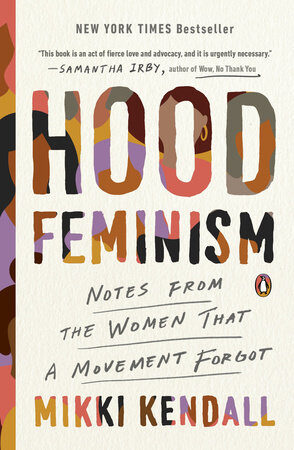Dionte Berry
Chief Editor
[email protected]
Although the feminist movement fights for equality between all genders, the movement often overlooks some women, such as those of color.
In her book “Hood Feminism,” diversity consultant and feminist Mikki Kendall focuses on the additional struggles women of color face that feminism fails to address and the general lack of intersectionality in the movement.
Intersectionality refers to those who have more than one social identity which may be the source of discrimination. Thus, women of color have intersectional identities, being both women and people of color.
Kendall references black women’s experiences as a space of intersectionality that is a blind spot in the feminist movement, which has historically been led by white women.
Kendall explains the shortcomings of feminism by sharing personal and cultural anecdotes of the obstacles she has faced, as well as the obstacles faced by black women, as a whole.
Kendall offers insight into black women’s livelihoods that only a black woman would know, telling stories that speak to experiences that people outside of this demographic don’t face but play a major role in the lives of black women. .
Reading “Hood Feminism” was refreshing and eye-opening. I read about subjects like the discrimination at work based on hair, the lack of sympathy towards black women and the violence they face that I have observed in society, but Kendall was able to explain them in detail in an understandable way.
The book acts partly as a memoir, but with each personal story, Kendall expands the subject and explains the societal implications.
The book has 18 short chapters stretching mostly around 20 pages. The chapters cover a wide range of topics, such as workplace discrimination, black motherhood, poverty, gun violence, fetishization and more.
My favorite chapter is “Of #FastTailedGirls and Freedom” which highlights the sexualization of black girls.
In this chapter, Kendall discusses how the physical maturation of black girls evolves into having their bodies monitored by those around them, such as parents and family, to protect them from being seen as jezebels.
Being told not to be a “quick tail girl,” or “quickie” for short, is seen as a type of protection, but it’s also a product of how black victimization is perceived. Black girls are seen as precocious and less innocent; therefore, if they are harassed or assaulted, they receive less sympathy from the public.
Families find it easier to control their daughters rather than working to change the way the world sees them so they can do what is natural at their age.
Kendall describes how her grandmother told her not to be fast and learned that when she was 12, her teenage body was enough for her to be seen as fast in some people’s eyes.
Before reading this section, I was already familiar with the term “fast” and its prevalence in the black community, but I did not know the implications it had. After reading some chapters, I would tell my friends who are black women about the book, and together we would have some eye-opening moments.
Along with sexualizations of black girls, Kendall writes about the idea of the “strong black woman” and how she acts as a veil to disguise the injustice black women face.
While it sounds like a compliment and could be, the phrase is used to avoid addressing the socially incongruous struggles black women face. Instead of addressing the workplace discrimination a black woman has to go through, it’s easier to just compliment her strength.
Another noteworthy chapter is “Gun Violence”. Kendall discusses the lack of perceived victimization of black women when it comes to gun violence. Instead, black women are seen as protectors or witnesses to the gun violence that black men face.
Kendall further explains that feminism tends to ignore gun violence, an issue that incongruously affects black women in low-income communities.
Kendall brings serious, unacknowledged topics to the table in “Hood Feminism,” and it’s written concisely. I give “Hood Feminism” a nine out of 10.
“Hood Feminism” is for everyone and has a conversational tone that feels like a friend is telling you a story. Kendall relays this profound, society-defining information with its sociological and philosophical implications in a format so personal it’s refreshing.
Most literary material with such profound societal implications tends to be presented in rigid research formats that often rely on abstractions, but instead of abstractions, Kendall shares stories from her own life.

